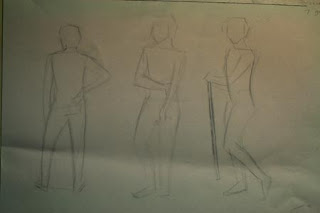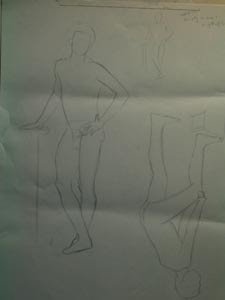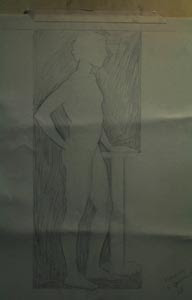
I started one of my
“Naked Gondolier” series paintings this past Sunday. I am doing it in my spare time, whatever that actually means. Anyway, I used the drawing I did of “Mario” that I showed you recently in a previous blog entry as the step-off point. I like the idea of the light in a figure emerging from darkness.
However, I also wanted to imply the gondola, as well as a bridge. I mean, what else spells out Venice (
Venezia) in
bella Italia? I am not looking to create details, but I do want to elicit an emotional response to the romance of this city. So, I began my
disegno, starting with line and a vague idea of three tonal values. I photographed my beginning and then, in Photoshop, started playing with various lighting effects.
Not happy with any one thing, I decided to just start painting. Sometimes these things have a way of speaking for themselves, you know. Yesterday, I asked the
Maestro John Angel if he could give me some pointers. I felt lost because I liked the light under the bridge, but it might not work in this particular painting. I was not sure that I wanted the reflection of the bridge to alter the shape of the dark water on the left. And the list went on. I could see why artists do works in series – it becomes possible then to choose one element for each artwork and play with it. Too many notes being played at once only makes noise, not music.
Allora, I concluded my confession to the Maestro with a, “I think that I am trying to do too much with too little.” Tilting his head slightly and with a pensive hesitation, he responded, “You took the words right out of my mouth. But also, I think you are afraid to lose too much.”
Wow. He just summed up my life.
So, I will add the darks and get back to you.
Thanks for reading.




































